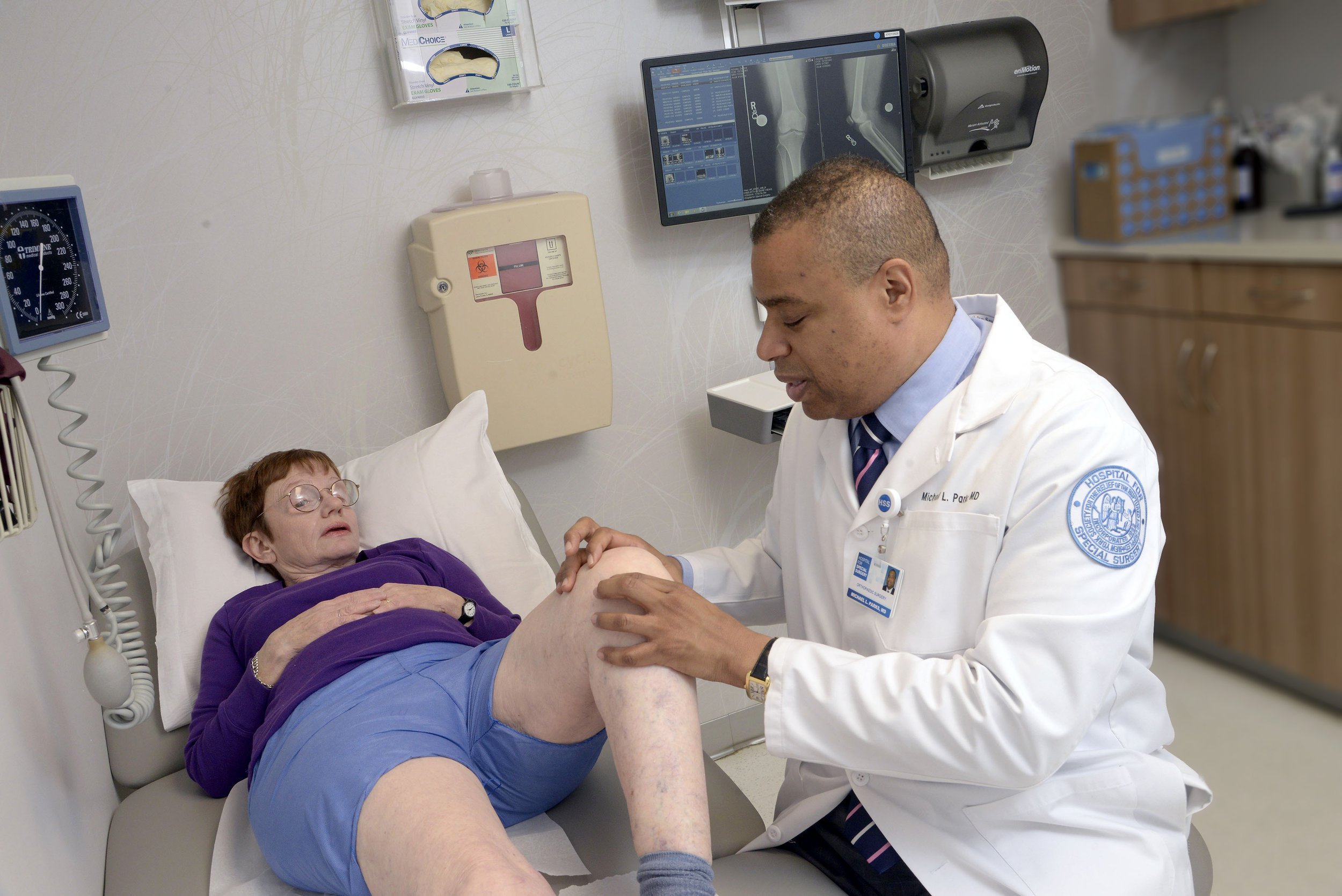
Restore Mobility and Relieve Chronic Knee Pain
Total Knee Arthroplasty
The technical name for total knee replacement is Total Knee Arthroplasty (TKA). An orthopedic surgeon commonly performs this procedure to replace the damaged surfaces of the knee joint. This procedure is often performed in individuals who suffer from chronic knee pain that has interfered with their daily function.
4 Parts to TKA
-
The Femoral Component
A prosthetic replacement on the end of the thigh bone.
-
The Tibial Component
The prosthetic replacement on the end of the shin bone.
-
A Polyethylene Liner
A plastic liner separating the tibial and femoral components.
-
Patellar button
The knee cap.
Why is TKA Performed?
The primary reason for undergoing this procedure is to alleviate pain and improve the function of the knee. Specific indications include:
Osteoarthritis: Osteoarthritis of the knee is a normal disease process when some people age. In this disease, the protective layer (cartilage) that covers the bones in the knee joint progressively gets thinner. Eventually, the femur (thigh bone) and tibia (shin bone) directly interact, causing pain.
Post Traumative Arthritis of the Knee: This disease is caused by direct trauma to the joint, such as a fracture from a car accident. The resulting incongruity in a joint after injury may lead to cartilage degradation and wear and, ultimately, bone-on-bone articulation and pain.
Rheumatoid Arthritis of the Knee: This chronic inflammatory disease affects slightly younger patients. It is characterized by chronic destruction of the joint caused by the immune system attacking its tissues. Typically, other joints are affected as well.
Symptoms to Look Out For:
• Knee pain that does not go away even with pain medications
• Constant pain throughout the day
• Limited range of motion of the knee
• Stiffness and swelling
• Difficulty standing for extended periods of time
• Pain with walking or climbing stairs
• Pain that does not improve with non-surgical treatments
What Does The Procedure Include?
Each patients’ treatment may vary to achieve the most effective results. The surgery takes approximately 1 ½ hours, and full recovery occurs over the first 1 to 3 months, with small remaining gains in the first year after surgery.
7 General Steps to TKA
-
1
Pre-surgery clearance from primary doctor
-
2
Administration of local anesthesia and a sedative to optimize comfortability during the procedure
-
3
An incision in the front of the knee to expose the knee joint
-
4
Removal of damaged cartilage and bone
-
5
Implantation and stabilization of new knee components
-
6
Closing of the incision
-
7
Post-surgery pain medications and rehabilitation

